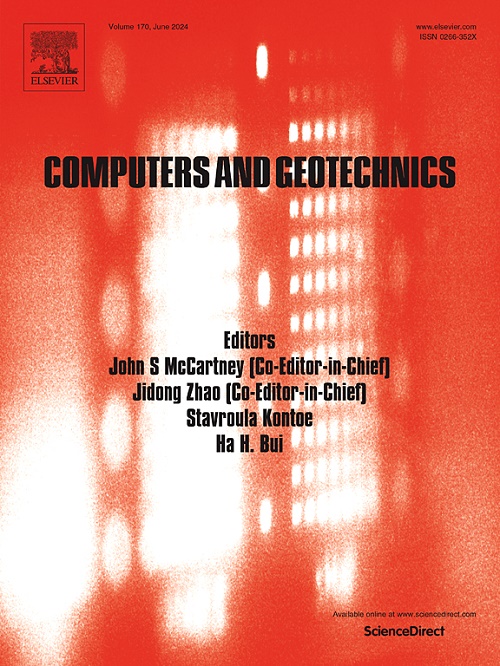Data-driven probabilistic seismic demand prediction and sustainability optimization of stone columns for liquefaction mitigation in regional mildly sloping ground
IF 5.3
1区 工程技术
Q1 COMPUTER SCIENCE, INTERDISCIPLINARY APPLICATIONS
引用次数: 0
Abstract
With the growing need for efficient mitigation strategies in liquefaction-prone regions, ensuring both seismic resilience and sustainability of infrastructure has become increasingly significant. This paper presents a data-driven probabilistic seismic demand model (PSDM) prediction and sustainability optimization framework to mitigate liquefaction-induced lateral deformation in regional mildly sloping ground improved with stone columns. The framework integrates finite element (FE) simulations with machine learning (ML) models, generating 1,200 ground FE models based on the key site attributes, such as ground inclination, soil properties, and stone column configurations. The performance of the selected ML models is evaluated through hyperparameter tuning by k-fold cross-validation, with the artificial neural network (ANN) outperforming other models in accurately predicting the PSDM. Subsequently, this framework is applied to a set of representative mildly sloping ground sites, enabling rapid PSDM prediction for each site with varying site attributes. Moreover, by incorporating cost and sustainability metrics, multi-objective optimization is performed using the developed ANN predictive model to maximize seismic performance while minimizing total carbon emissions and costs associated with ground improvement. Overall, the framework allows for rapid and accurate PSDM prediction and regional optimization, facilitating the identification of the optimal stone column configurations for efficient and sustainable liquefaction mitigation.
求助全文
约1分钟内获得全文
求助全文
来源期刊

Computers and Geotechnics
地学-地球科学综合
CiteScore
9.10
自引率
15.10%
发文量
438
审稿时长
45 days
期刊介绍:
The use of computers is firmly established in geotechnical engineering and continues to grow rapidly in both engineering practice and academe. The development of advanced numerical techniques and constitutive modeling, in conjunction with rapid developments in computer hardware, enables problems to be tackled that were unthinkable even a few years ago. Computers and Geotechnics provides an up-to-date reference for engineers and researchers engaged in computer aided analysis and research in geotechnical engineering. The journal is intended for an expeditious dissemination of advanced computer applications across a broad range of geotechnical topics. Contributions on advances in numerical algorithms, computer implementation of new constitutive models and probabilistic methods are especially encouraged.
 求助内容:
求助内容: 应助结果提醒方式:
应助结果提醒方式:


